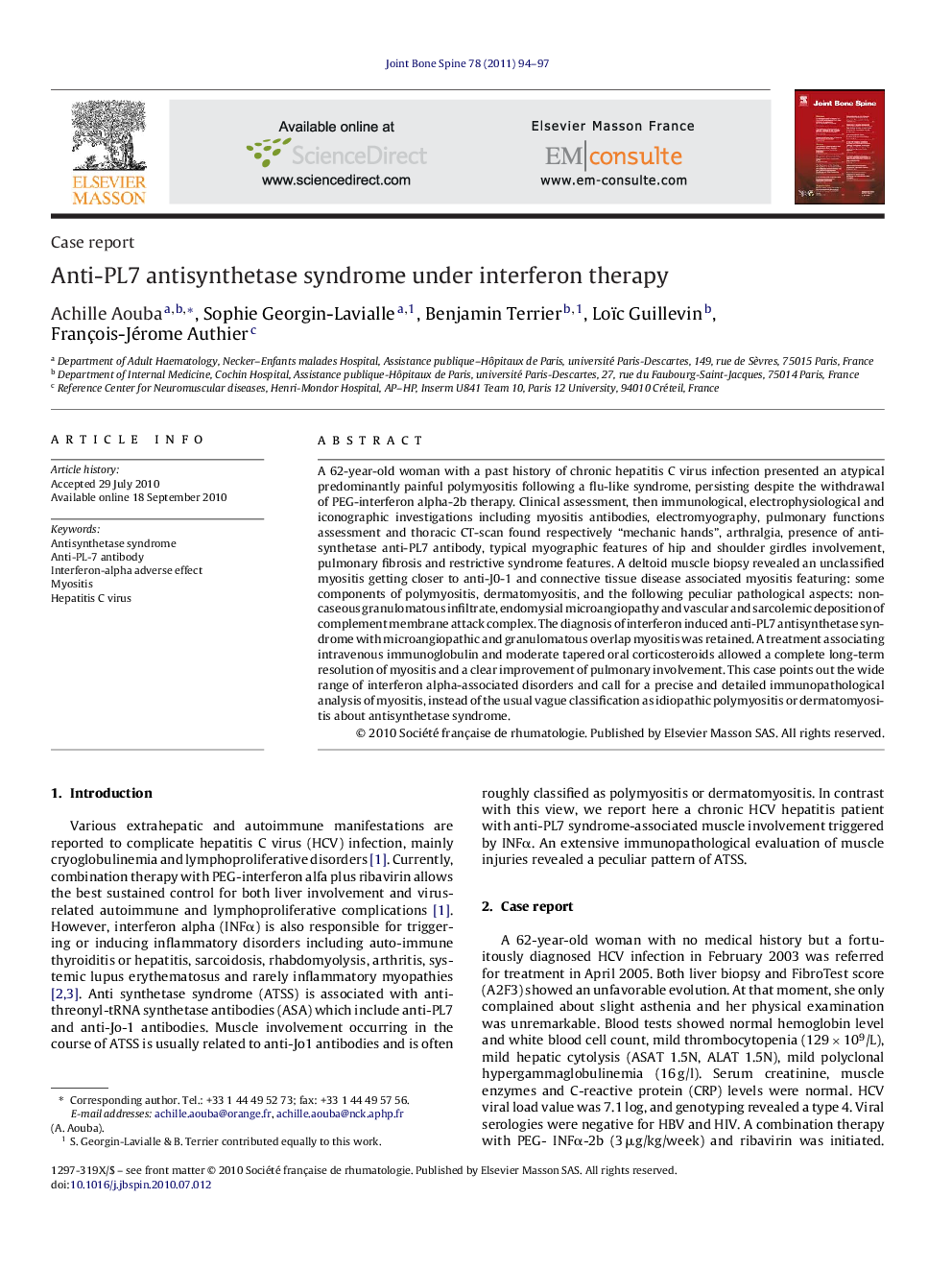| Article ID | Journal | Published Year | Pages | File Type |
|---|---|---|---|---|
| 3366570 | Joint Bone Spine | 2011 | 4 Pages |
A 62-year-old woman with a past history of chronic hepatitis C virus infection presented an atypical predominantly painful polymyositis following a flu-like syndrome, persisting despite the withdrawal of PEG-interferon alpha-2b therapy. Clinical assessment, then immunological, electrophysiological and iconographic investigations including myositis antibodies, electromyography, pulmonary functions assessment and thoracic CT-scan found respectively “mechanic hands”, arthralgia, presence of antisynthetase anti-PL7 antibody, typical myographic features of hip and shoulder girdles involvement, pulmonary fibrosis and restrictive syndrome features. A deltoid muscle biopsy revealed an unclassified myositis getting closer to anti-J0-1 and connective tissue disease associated myositis featuring: some components of polymyositis, dermatomyositis, and the following peculiar pathological aspects: noncaseous granulomatous infiltrate, endomysial microangiopathy and vascular and sarcolemic deposition of complement membrane attack complex. The diagnosis of interferon induced anti-PL7 antisynthetase syndrome with microangiopathic and granulomatous overlap myositis was retained. A treatment associating intravenous immunoglobulin and moderate tapered oral corticosteroids allowed a complete long-term resolution of myositis and a clear improvement of pulmonary involvement. This case points out the wide range of interferon alpha-associated disorders and call for a precise and detailed immunopathological analysis of myositis, instead of the usual vague classification as idiopathic polymyositis or dermatomyositis about antisynthetase syndrome.
